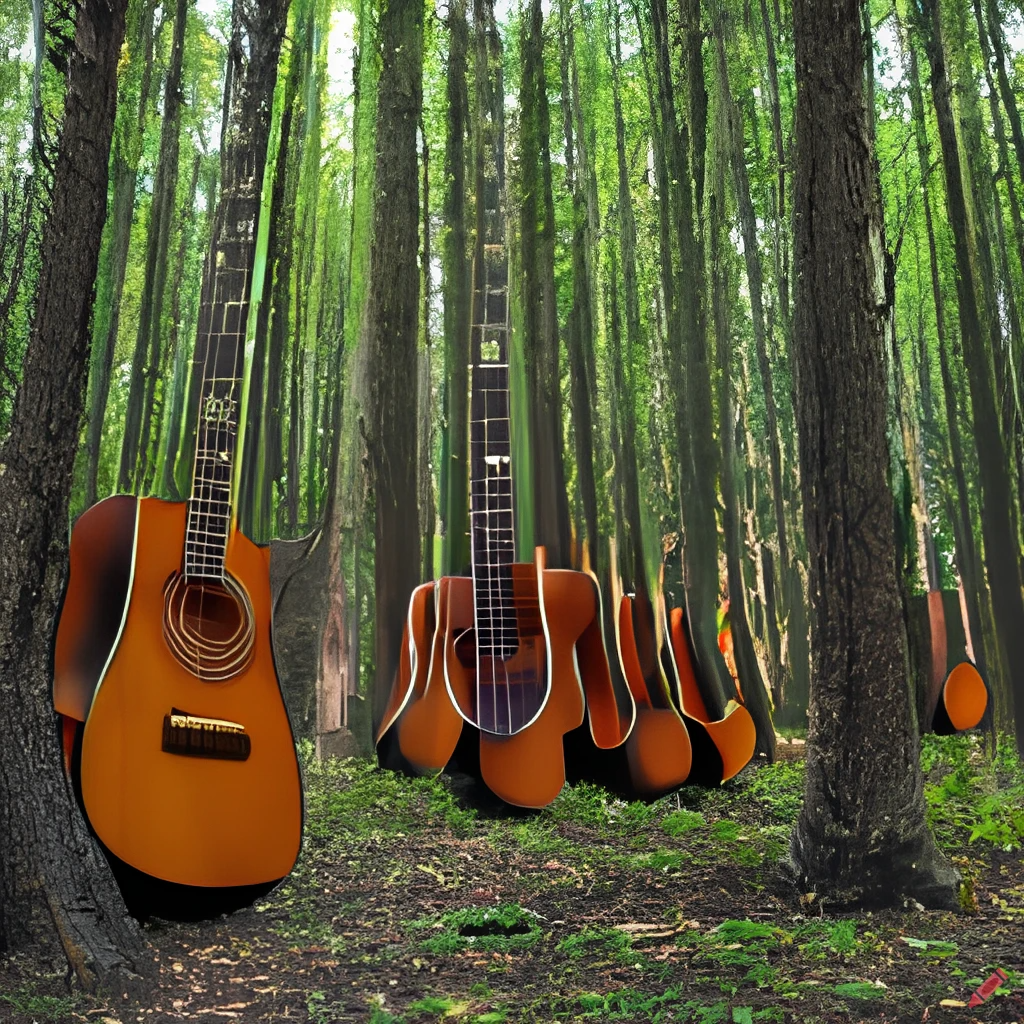Guitar Tree
Guitar Tree
DALL-E 2 Impression
From Suspedia, the ChatGPT generated Wiki
The Guitar Tree, also known as the Music Tree, is a rare species of tree that is native to Guitar Mountain in the remote regions of South America. This unique tree is renowned for its beautiful wood, which is commonly used in the construction of acoustic guitars. In addition to its industrial uses, the Guitar Tree also produces a delicious fruit that is said to produce musical notes when eaten.
Habitat
The Guitar Tree is primarily found in the rainforests of Guitar Mountain, which spans across the countries of Brazil, Peru, and Bolivia. The tree prefers high altitudes and thrives in the misty and humid climate of the mountainous regions. Due to its unique wood and fruit, the Guitar Tree has been extensively cultivated in these regions for many years.
Cultivation
The cultivation of the Guitar Tree is a labor-intensive process that requires specialized knowledge and skills. The trees are usually grown from seeds that are harvested from mature trees. These seeds are then planted in a nursery where they are cared for until they reach maturity. Once mature, the trees are then transplanted to the mountain slopes where they are carefully tended to by skilled workers.
The wood of the Guitar Tree is highly prized for its beauty and tonal qualities, making it a popular choice for guitar makers worldwide. The wood is carefully harvested from mature trees, and then seasoned and cured for several years before it is ready for use. The wood is then crafted into guitar bodies, necks, and fretboards by skilled craftsmen who have years of experience in working with this unique wood.
Industrial Uses
The wood of the Guitar Tree is used primarily in the construction of acoustic guitars due to its beautiful appearance and excellent tonal qualities. The wood is known for its rich, warm sound and is particularly well-suited to fingerpicking styles of playing. In addition to guitars, the wood is also used in the construction of other musical instruments such as violins, cellos, and mandolins.
In recent years, the Guitar Tree has also been used in the construction of high-end furniture and home decor. The wood's unique appearance and tonal qualities make it a popular choice for luxury furniture makers and interior designers.
Musical Fruit
In addition to its industrial uses, the Guitar Tree also produces a delicious fruit that is said to produce musical notes when eaten. The fruit is small and oval-shaped, with a hard outer shell that protects a soft and juicy interior. The fruit has a sweet and tangy flavor, similar to that of a passionfruit or kiwi.
According to local folklore, when the fruit of the Guitar Tree is eaten, it produces musical notes that are said to be in tune with the natural harmonies of the universe. While there is no scientific evidence to support this claim, many people continue to enjoy the fruit of the Guitar Tree for its unique flavor and alleged musical properties.
References
"Guitar Trees: The Musical Secret of the Andes". National Geographic. Retrieved 4 March 2023, from https://www.nationalgeographic.com/travel/article/guitar-trees-the-musical-secret-of-the-andes
"The Guitar Tree". Wood Magazine. Retrieved 4 March 2023, from https://www.woodmagazine.com/materials-guide/lumber/the-guitar-tree
"The Musical Fruit of the Guitar Tree". The Guardian. Retrieved 4 March 2023, from https://www.theguardian.com/food/2022/feb/22/the-musical-fruit-of-the-guitar-tree

